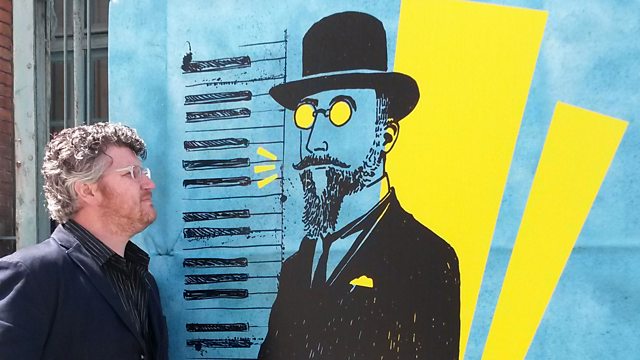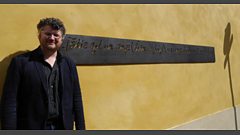Erik Satie at 150
Tom Service re-appraises Erik Satie, the man and his music, on the 150th anniversary of his birth. Including contributions from Caroline Potter and Pascal Roge.
Tom Service re-appraises Erik Satie, the man and his music, on the 150th anniversary of his birth.
Satie was an eccentric figure in Paris: the velvet gentleman with identical suits, who lived in a cramped 'cupboard' in Montmartre before moving to the suburbs in Arcueil. He had an uncanny knack of being involved in all the latest artistic advances of the time, collaborating with Jean Cocteau and Pablo Picasso among others.
Tom visits some of Satie's favourite haunts in Paris and endeavours to find the truth behind the colourful stories of his eccentric life. At the Musée de Montmartre he discovers Satie's connections with visual artists, and at the Lapin Agile he experiences the form of artistic cabaret as Satie would have encountered it.
With expert opinion from musicologists Caroline Potter and Robert Orledge, pianist Pascal Rogé, composer Kurt Schwertsik, stage director Danielle Mathieu-Bouillon, and Satie enthusiast Alistair McGowan.
Last on
More episodes
Satie 150
Tom Service re-appraises Erik Satie, the man and his music, on the 150th anniversary of his birth.
Satie was an eccentric figure in Paris: the velvet gentleman with identical suits, who lived in a cramped ‘cupboard’ in Montmartre before moving to the suburbs in Arcueil.�� Born in Normandy to a French father and Scottish mother, he was a talented child but a terrible student at the Paris Conservatoire: reports of his piano playing call him a lazy mediocrity. Attracted to Montmartre by its revolutionary spirit in the late 1880s and 1890s, he established the strange sound world that he would make his own – writing around this time, the pieces for which he’s still most famous – the Gymnopedies and Gnossienes.�� He had an uncanny knack of being involved in all the latest artistic advances of the time, collaborating with Jean Cocteau and Pablo Picasso in the Cubist ballet Parade, which the poet Apollinaire dubbed ‘a kind of surrealism’.�� In the later 20th century Satie became the godfather of minimalism and of postmodernism, being championed by many, including John Cage.
Tom visits some of Satie's favourite haunts in Paris and endeavours to find the truth behind the colourful stories of his eccentric life. ��At the Musée de Montmartre he discovers Satie’s connections with visual artists in what was the art studio of Satie’s lover, Suzanne Valadon, and at the Lapin Agile he experiences the form of artistic cabaret as Satie would have encountered it.
With expert opinion from musicologists Caroline Potter and Robert Orledge, pianist Pascal Rogé, composer Kurt Schwertsik, stage director Danielle Matthieu-Bouillon, and Satie enthusiast Alistair McGowan.
More information:
Beyond Gymnopédies - some recommended listening from our Satie experts
��
Pascal Roge recommends:
Gnossiennes no.s 1-6
Avants dernieres pensees
��
Caroline Potter recommends:
Embryons desséchés
Parade (ballet)
Relâche (ballet)
Sports et divertissements
��
Robert Orledge recommends:
Trois Nocturnes
Socrate
Credits
| Role | Contributor |
|---|---|
| Presenter | Tom Service |
| Interviewed Guest | Caroline Potter |
| Interviewed Guest | Robert Orledge |
| Interviewed Guest | Pascal Roge |
| Interviewed Guest | Kurt Schwertsik |
| Interviewed Guest | Danielle Mathieu-Bouillon |
| Interviewed Guest | Alistair McGowan |
Broadcasts
- Sat 14 May 2016 12:15�������� Radio 3
- Mon 16 May 2016 22:00�������� Radio 3
Featured in...
![]()
Composer portraits—Music Matters
Radio 3's Music Matters introduces composers
Knock on wood – six stunning wooden concert halls around the world
Steel and concrete can't beat good old wood to produce the best sounds for music.
The evolution of video game music
Tom Service traces the rise of an exciting new genre, from bleeps to responsive scores.
Why music can literally make us lose track of time
Try our psychoacoustic experiment to see how tempo can affect your timekeeping abilities.
Podcast
-
![]()
Music Matters
The stories that matter, the people that matter, the music that matters




